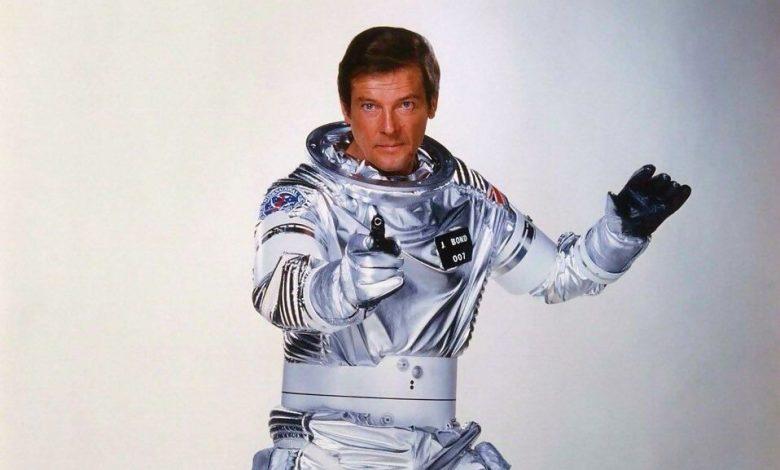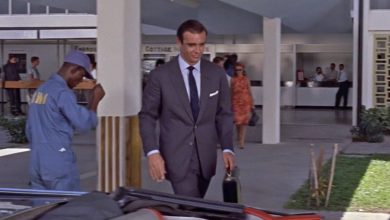
The allure of the moon has captivated humanity for centuries. From ancient myths and legends to modern cinematic masterpieces, our celestial neighbor has played a pivotal role in shaping narratives and evoking wonder. This article delves into the multifaceted connections between the moon, the iconic James Bond film “Moonraker,” and the awe-inspiring phenomenon of supermoons. As we journey through these interconnected themes, we’ll uncover the rich tapestry of stories, science, and cultural significance that the moon has woven into our collective consciousness.
Key Takeaways
- “Moonraker” is the 11th film in the James Bond series, which took a unique turn by venturing into the realm of science fiction and space travel.
- The term “Moonraker” has roots in English folklore, originating from a tale in Wiltshire about smugglers deceiving authorities.
- Supermoons, a term coined in 1979, refer to the moon’s closer proximity to Earth, making it appear larger and brighter in the sky. August is set to witness two such celestial events.
- The gravitational pull of supermoons has a pronounced effect on Earth’s tides, leading to higher high tides and lower low tides.
Moonraker: James Bond Movie
Moonraker,” the 11th film in the James Bond series, was released in 1979 and starred Roger Moore as the iconic British secret agent. The film was directed by Lewis Gilbert and based on Ian Fleming’s 1955 novel of the same name. However, the film’s plot deviates significantly from the original novel, incorporating elements of science fiction and space travel that were popular at the time.
The film’s storyline revolves around the hijacking of a space shuttle, named Moonraker, leading James Bond on a globe-trotting investigation. His journey takes him from California to Italy, Brazil, and finally into outer space. The villain, Hugo Drax, plans to wipe out the world’s population and create a new master race in space. Bond, with the help of CIA agent Holly Goodhead, must stop Drax and save humanity.
“Moonraker” is notable for its departure from the traditional Bond formula, featuring extravagant sets, high-tech gadgets, and a plot that leans heavily into the science fiction genre. Despite mixed reviews, the film was a commercial success, becoming the highest-grossing film of the Bond series at the time.
For more detailed information about the movie, you can visit the official James Bond website.
Signification of Moonraker in English
The term “Moonraker” has a rich history in English folklore and dialect. It originates from the county of Wiltshire in England, where locals are often referred to as “Moonrakers.” The term comes from a humorous folk tale. The story goes that smugglers, having hidden contraband French brandy in a village pond, were caught in the act of raking the pond to retrieve their stash. When confronted by the authorities, they pointed to the reflection of the moon in the pond and claimed they were trying to rake in a round cheese. The officials laughed at their apparent stupidity and left, allowing the smugglers to continue their illegal activities.
In the context of the James Bond universe, “Moonraker” is the name of the space shuttle in the movie. The name is a clever nod to the English folklore, symbolizing the film’s plot of reaching for the moon, both literally and metaphorically.
First of Two Full Supermoons in August This Week
A supermoon is a full moon or a new moon that nearly coincides with perigee—the closest that the Moon comes to the Earth in its elliptic orbit—resulting in a slightly larger-than-usual apparent size of the lunar disk as viewed from Earth. The term “supermoon” is astrological in origin and has now entered popular usage.
The first of two full supermoons in August is a celestial event worth marking on your calendar. During this time, the moon appears larger and brighter in the night sky, offering spectacular views and photo opportunities. The phenomenon occurs because the moon’s orbit around the Earth is not a perfect circle but an ellipse, so at certain times it is closer to us and appears larger—a supermoon.
Here are some key details about the first supermoon in August:
- Date: The exact date can vary depending on your location. Check a reliable astronomy website for precise information.
- Viewing Tips: The best time to view the supermoon is just after moonrise when it is close to the horizon. At this time, an optical illusion makes the moon appear even larger.
- Photography Tips: For the best photos, use a tripod to stabilize your camera and use the lunar setting if available. Including buildings or landmarks in your shot can give a sense of scale to the moon.
Daily Sunrise/Sunset Times this week:
| Date | Sunrise | Sunset | Daylight |
|---|---|---|---|
| Jul 31 | 6:16 am | 8:26 pm | 14 hrs, 10 mins |
| Aug 1 | 6:17 am | 8:25 pm | 14 hrs, 8 mins |
| Aug 2 | 6:18 am | 8:24 pm | 14 hrs, 6 mins |
| Aug 3 | 6:19 am | 8:23 pm | 14 hrs, 4 mins |
| Aug 4 | 6:19 am | 8:22 pm | 14 hrs, 3 mins |
| Aug 5 | 6:20 am | 8:21 pm | 14 hrs, 1 min |
| Aug 6 | 6:21 am | 8:20 pm | 13 hrs, 59 mins |
Frequently Asked Questions
1. Why did the “Moonraker” film deviate from Ian Fleming’s original novel?
The decision to deviate from Ian Fleming’s original “Moonraker” novel was largely influenced by the cultural and cinematic landscape of the late 1970s. During this period, the science fiction genre, especially space-themed movies, was gaining significant traction. With the success of films like “Star Wars” in 1977, there was a clear audience interest in space adventures.
Moreover, the James Bond franchise has always been known for its adaptability, often incorporating contemporary themes and trends to remain relevant. By the time “Moonraker” was in production, there had already been ten Bond films, and the producers were looking for fresh and exciting storylines to captivate audiences. Taking Bond to space was a bold move, but it was in line with the franchise’s tradition of pushing boundaries and reinventing itself.
Lastly, while the original novel was grounded and had a more localized plot, the film adaptation aimed for a grander scale, fitting for the larger-than-life persona of James Bond. The space setting allowed for innovative action sequences, futuristic gadgets, and a global (and beyond) scale of adventure.
2. Are there other James Bond movies that significantly deviate from their original novels?
Yes, several James Bond films have taken creative liberties and deviated from their source material. For instance, “The Spy Who Loved Me,” also directed by Lewis Gilbert, bears little resemblance to Ian Fleming’s novel. The novel’s plot was entirely discarded, and only the title was retained for the film.
Another example is “You Only Live Twice.” While the novel presents Bond’s mission in Japan as a part of a larger narrative arc involving his nemesis Blofeld, the film adaptation reimagines the story, focusing on a different plot about a space race between superpowers.
It’s worth noting that these deviations are not necessarily negative. They often arise from the need to adapt a literary work to the cinematic medium, which has its own set of constraints and opportunities. The goal is always to create an engaging film that resonates with audiences, even if it means straying from the original plot.
3. What is the origin of the term “supermoon”?
The term “supermoon” was coined by astrologer Richard Nolle in 1979. He defined it as a new or full moon that occurs when the moon is within 90% of its closest approach to Earth in a given orbit. While the term has astrological origins, it has been widely adopted by the public and even some astronomers, despite not being a term used in classical astronomy.
The scientific term for the phenomenon is “perigee syzygy.” “Perigee” refers to the moon’s closest point to Earth in its orbit, and “syzygy” is when the Earth, moon, and sun are aligned, which happens during full and new moons. However, “supermoon” is catchier and easier for the general public to remember and understand, which is likely why it has become so popular.
4. How often do supermoons occur?
Supermoons are not as rare as one might think. On average, there are 4-6 supermoons each year. This is because the moon’s orbit around Earth is elliptical, causing the moon to have both a closest (perigee) and farthest (apogee) point from Earth each month. When a full moon or new moon coincides with perigee, we get a supermoon.
However, not all supermoons are equal. The exact distance between the Earth and the moon during a supermoon can vary, leading to some supermoons appearing slightly larger or brighter than others. It’s also worth noting that while full moon supermoons are more popular due to their bright and large appearance, new moon supermoons occur as well but are not visible as the moon is in the Earth’s shadow.
5. How does the supermoon affect tides on Earth?
The gravitational pull of the moon is a significant factor in causing the tides on Earth. When the moon is closer to Earth, as during a supermoon, its gravitational influence is stronger, leading to higher than average tides, known as “spring tides.”
During a supermoon, the alignment of the Earth, moon, and sun results in a combined gravitational effect, causing the oceans to bulge out more than usual. This results in higher high tides and lower low tides. These pronounced tides during a supermoon can lead to coastal flooding, especially if combined with other meteorological factors.
However, it’s essential to understand that while supermoons do influence tides, they are not the sole factor. Wind, atmospheric pressure, and other factors can also play a significant role in determining tide levels.
6. Are there other notable folktales related to the moon in English culture?
English folklore is rich with tales and myths related to the moon. Apart from the “Moonraker” story from Wiltshire, there’s the “Man in the Moon” legend. This tale suggests that the shadows on the moon represent a man carrying a bundle of sticks, accompanied by a dog. The story varies, but a common version is that the man was banished to the moon as punishment for collecting sticks on the Sabbath.
Another tale is the “Hare in the Moon.” Unlike the Western perception of seeing a face or man in the moon’s shadows, in some parts of England, especially in the North, the dark patches are sometimes visualized as a hare.
These tales, like many folktales, offer insights into the cultural and historical contexts from which they emerged. They reflect humanity’s innate desire to make sense of the natural world and the mysteries of the cosmos.
7. How does “Moonraker” compare to other space-themed movies of its era?
“Moonraker” was released during a period when space-themed movies were gaining immense popularity, primarily driven by the success of “Star Wars” in 1977. Compared to other space films of its era, “Moonraker” stands out as a hybrid, blending the traditional Bond espionage thriller with science fiction elements.
While movies like “Star Wars” and “Close Encounters of the Third Kind” delved deep into the realms of space fantasy and extraterrestrial life, “Moonraker” retained its Earth-centric plot, using space as a backdrop for Bond’s mission. The film doesn’t explore alien civilizations or distant galaxies but focuses on a human antagonist’s space-based scheme.
In terms of production, “Moonraker” boasted high-quality special effects for its time, especially during the space sequences. However, while it was visually impressive, some critics felt the film’s venture into space was a stretch for the Bond franchise.
8. How do filmmakers decide on the gadgets and technology featured in James Bond movies?
The gadgets and technology in James Bond films are a blend of imagination, current technological trends, and a touch of futuristic vision. The franchise’s production designer and the special effects team play crucial roles in conceptualizing and creating these gadgets.
Often, the gadgets are extensions of real-world technology, albeit with a Bond twist. For instance, while a regular watch tells time, Bond’s watch might have a laser cutter or a tracking device.
Conclusion
The moon, in all its phases and forms, continues to be a source of fascination, inspiring tales of adventure, romance, and mystery. From the charming folktales of Wiltshire to the thrilling escapades of James Bond in “Moonraker,” the moon’s influence on our stories and experiences is undeniable. As we anticipate the celestial spectacle of the supermoons in August, it’s a timely reminder of the enduring bond between humanity and the cosmos. Whether through the lens of folklore, cinema, or astronomy, the moon’s allure remains timeless, urging us to look up, wonder, and dream.










